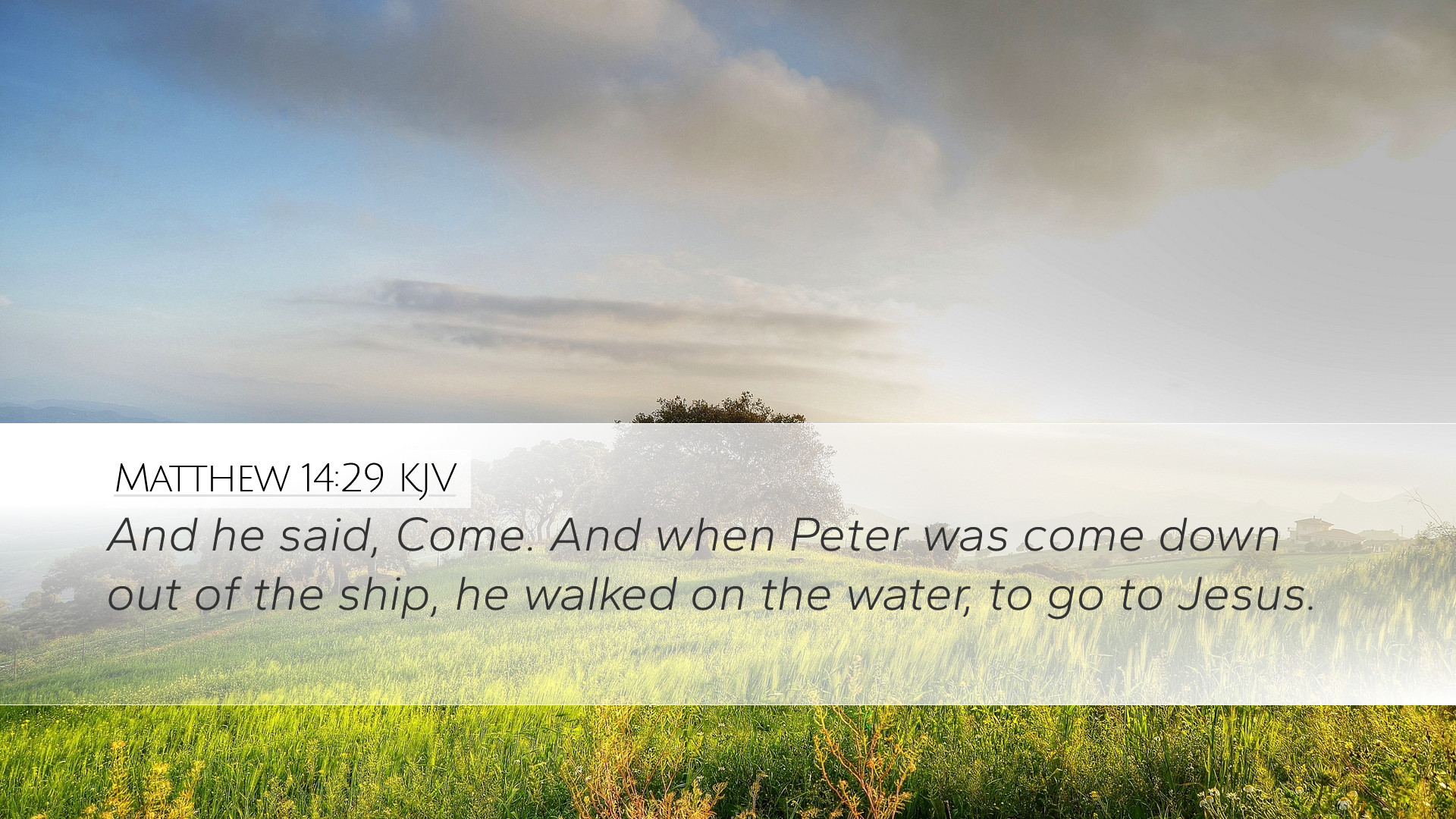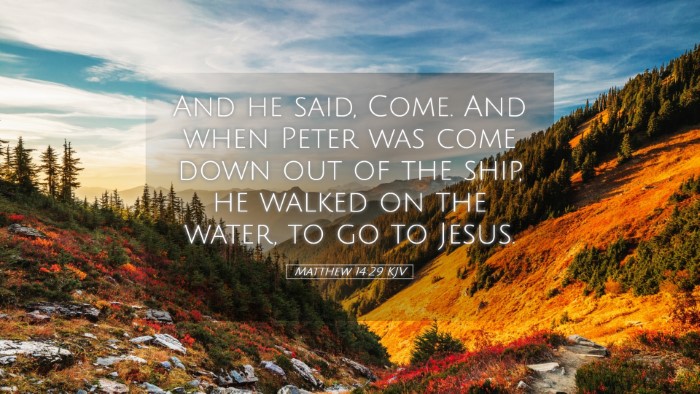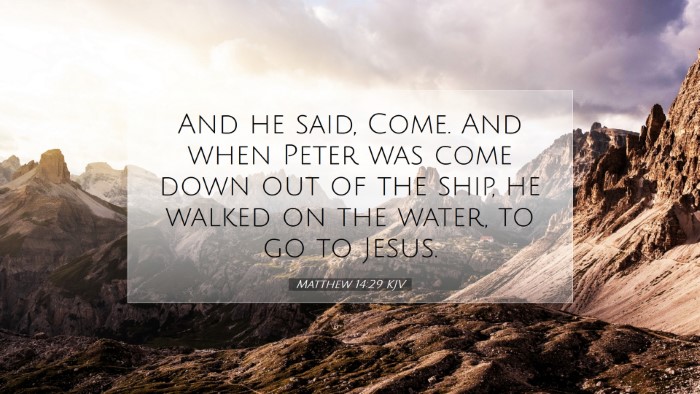Commentary on Matthew 14:29
Verse Context: In this verse, we find Peter responding to Jesus's invitation to walk on water. This event occurs after Jesus had fed the 5,000 and then sent the disciples across the Sea of Galilee while He went to pray alone. The disciples were caught in a storm when Jesus approached them on the water, demonstrating His divine authority over nature.
Exegesis and Analysis
Peter’s Initiative: Peter's request, "Lord, if it is you, command me to come to you on the water" (NIV), highlights his willingness to step out in faith. Public domain commentaries offer various insights here:
- Matthew Henry: Henry notes that Peter's faith was commendable, indicating a deep desire to follow Christ even in perilous situations. This act of faith, however, should not lead to pride but to an acknowledgment of one's dependence on Christ's power.
- Albert Barnes: Barnes highlights the importance of Peter's request as a test of faith and obedience. He emphasizes that Peter was not to act upon mere impulse; rather, he sought confirmation from Jesus, which is a sound approach to any faithful action.
- Adam Clarke: Clarke remarks that Peter’s call for Christ to command him shows a clear recognition of Christ’s authority. He aligns Peter's faith with his understanding that it is only through Jesus’ command that he can achieve what appears impossible.
Theology of Faith
Faith in Action: This verse is a profound testament to the nature of faith. It suggests a model for believers in exercising faith when faced with uncertainties:
- Henry: Faith must be active, leading us to take steps that may defy logic or reason, just as Peter stepped out of the boat. This act reflects an unwavering trust in Christ, despite the surrounding chaos.
- Barnes: Here, Barnes underscores an essential lesson — that faith must be accompanied by a divine prompting. It is not enough to merely desire to do something for God; we must ensure that it is His will and command that propels our actions.
- Clarke: Clarke states that true faith involves obedience to God's word and a willingness to undertake what He authorizes, reassuring believers of Christ's presence and support in their endeavors.
Christ’s Authority
Invitation to Trust: When Jesus commands Peter to come, He is not only inviting him to walk on water but also challenging him to trust in His divine nature:
- Henry: Henry emphasizes Jesus' willingness to extend the invitation to participate in the miraculous. This reflects the nature of Christ calling believers to greater depths of faith and experience with Him.
- Barnes: Barnes points out that this encounter illustrates Christ's willingness to support our faith ventures, commanding that we walk in faith even when we are unsure, emphasizing that He is in control of our surroundings.
- Clarke: Clarke discusses the duality of Jesus’ command — it serves as an assurance of His presence while simultaneously evoking obedience from Peter, that he might experience the miracle of faith.
Lessons for Believers
Stepping Out in Faith: There are several practical applications of this passage for Christians today:
- Courage to Act: The narrative calls believers to be courageous in their faith. Much like Peter, believers are to act according to the prompting of Christ even when circumstances appear daunting.
- Dependence on Christ: Peter’s experience teaches the necessity of relying fully on Christ’s power. As long as he maintained focus on Christ, he remained buoyant; the moment his attention wavered, he began to sink.
- Faith and Doubt: The tension between faith and fear is evident. Even a momentary lapse in faith caused Peter to falter. Christians are reminded that doubt can undermine their spiritual walk, reinforcing the need for constant vigilance in faith.
Conclusion
Matthew 14:29 provides a rich tapestry of faith, authority, and divine invitation. The commentaries of Matthew Henry, Albert Barnes, and Adam Clarke collectively shed light on the lessons embedded in this narrative. They remind us that stepping out in faith requires divine affirmation, sustained focus, and a heartfelt courage to embrace the commands of Christ. Ultimately, believers are encouraged to trust in Christ’s power to enable them to do what would otherwise be impossible. This passage continues to be a source of inspiration and theological reflection for pastors, students, theologians, and scholars alike.


